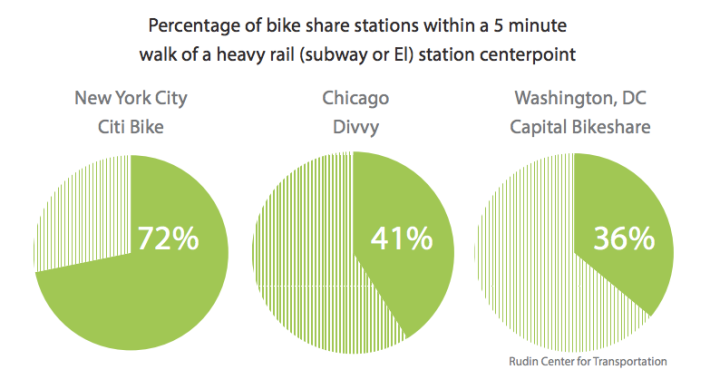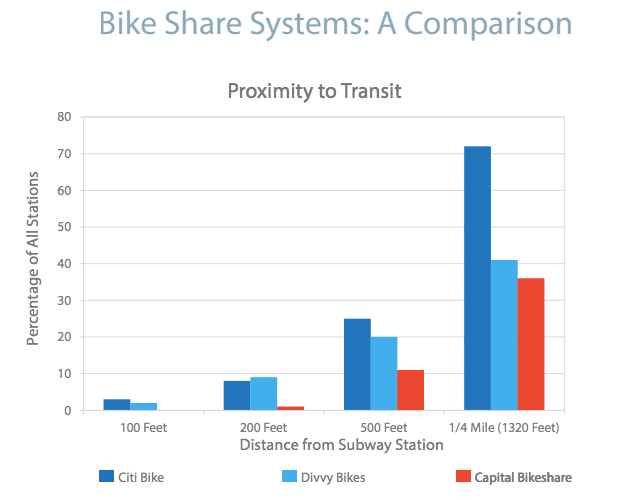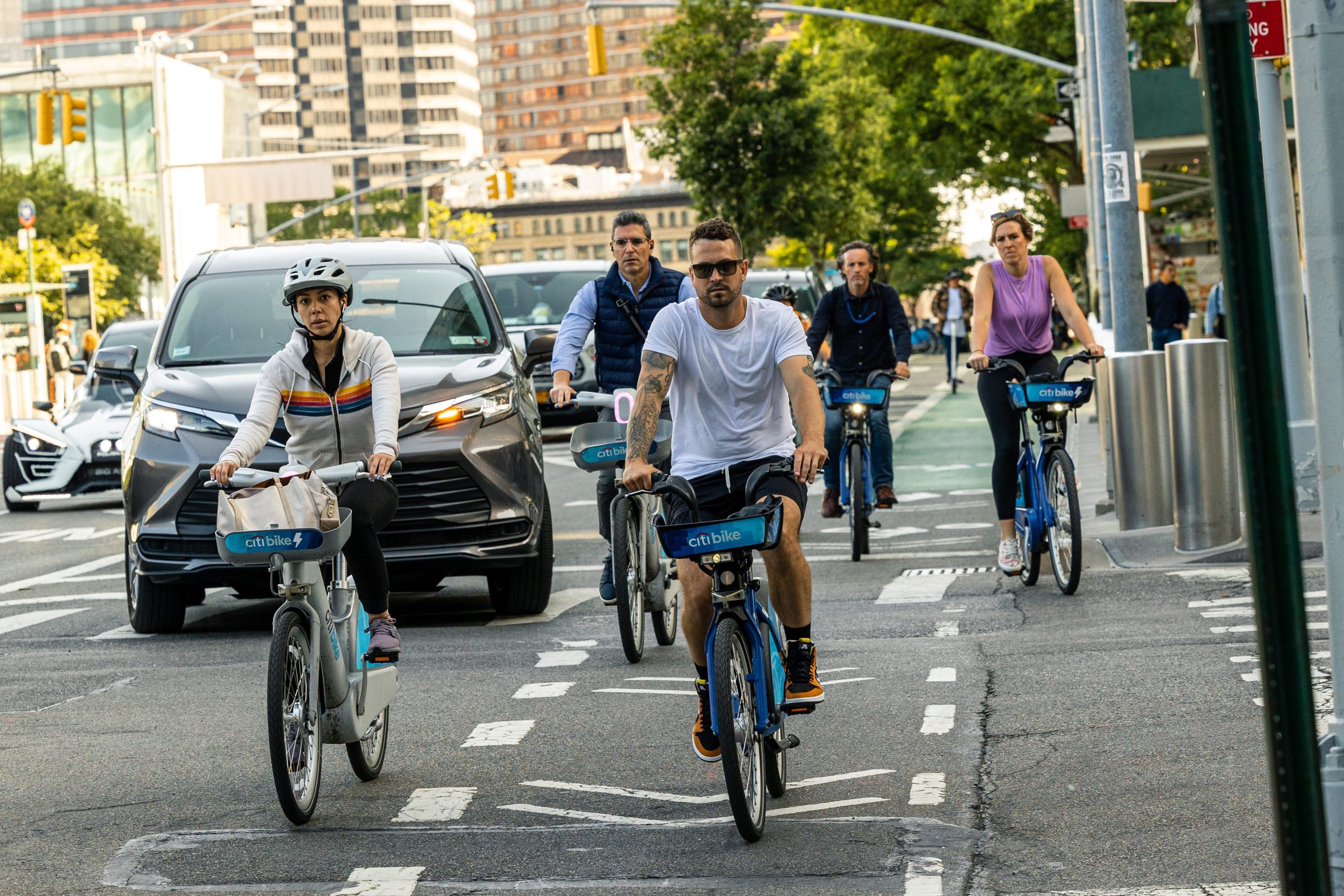
Even when adjusted for its size, Citi Bike's ridership numbers have quickly surpassed comparable systems. While there are many factors shaping Citi Bike's success, a new report from NYU argues that the program's connections to transit could be a key to its strikingly high ridership.
Last week, graduate students at NYU's Rudin Center for Transportation Policy and Management issued a report that mapped bike-share stations and metro stations in New York, Chicago, and Washington, DC. In New York, frequent subway stops in the Manhattan core and nearby Brooklyn mesh closely with the dense network of Citi Bike stations. The result: One in 10 Citi Bike stations is within 100 feet of a subway stop, more than half are within 750 feet and nearly three-quarters are within a quarter-mile. In the other two cities, both rail transit and bike-share stations are spaced farther apart, and their ridership numbers have lagged behind Citi Bike's.
In the Citi Bike service area, there are 19.7 bike-share stations per square mile, while there are only 6.8 stations per square mile in Chicago and 4.37 per square mile in DC, with both cities spread over a far larger area than Citi Bike. By concentrating in the transit-heavy core, the report argues, Citi Bike has been able to attain ridership numbers above other systems.
"It was striking how many of the Citi Bike stations are within just a five-minute walk [of the subway]," said report co-author Lily Gordon-Koven. "In New York, it works very well if you get off the subway and you want to make a really short trip."

Unlike systems in other cities, however, Citi Bike has not yet released data showing where individual trips start and finish. This data would provide a deeper look at how and where Citi Bike members are using the system. "When it comes out, I expect we would see more short trips than in DC or Chicago, where I would expect some of the trips are a little bit longer," Gordon-Koven said.
“Citi Bike is about the short trip or the last mile," report co-author Nolan Levenson said. "In DC, people are using it for their whole trip."
In addition to crunching Citi Bike's origin-destination data, Gordon-Koven and Levenson are interested in learning more about how bike-share has affected people's transportation decisions. (A DOT survey of more than 1,000 Citi Bike users last August found that the system has primarily shifted trips from walking, taxi, livery, and personal car use, while more than half of users combine bike-share with other modes "most of the time.")
Even though Citi Bike is a convenient way to start or complete the legs of transit trips, its fare structure remains separate from the MTA's MetroCard. Nor will Citi Bike's customer system be integrated with a bike-share program launching in Hoboken, Weehawken, and Jersey City this summer. Other bike-share systems in Chicago, San Francisco, Boston, and DC, have a more cohesive regional structure in place.
With the MTA looking to roll out a new fare card in the next few years, Gordon-Koven and Levenson said there's an opportunity for deeper integration with other forms of transit. "You’d have to have the MTA work with NYC Bike Share on how they share revenue," Levenson said. "We have many different regional public transit providers in our area, so that type of regional coordination isn’t there."





